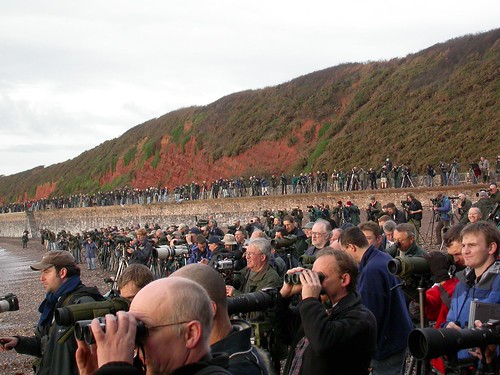Costa Rica: Day 1
I'm going to recap my trip to CR by using one entry for each different location we stayed in. On day 1, I arrived safely and on-time thanks to American Airlines. After standing in an immensely long line for "inmigracion", my passport was stamped and we were on our way. The three of us traveling from NJ met the rest of the gang coming from Virginia. We hopped in our little van and were on our way to a one night stay at the nearby Las Orquideas hotel.
My binoculars were out of my bag in seconds. I began scanning for birds but didn't see much in this urban environment. We arrived at the hotel where the yard was full of blooming vervain and many large trees. A much larger property with manicured gardens and other wild areas could be seen behind the hotel.

After dropping our luggage in our rooms, we gathered for some afternoon birding. My first bird was a Plain-capped Starthroat that Mike (our leader) had found on nest in a tree the day before. Nice bird! I had actually seen one in AZ in 2003, but it was still great to see. We added Rufous-tailed Hummingbird, Tropical Kingbird, Great Kiskadee, and a ton of Black Vultures. My first lifer of the trip was a Steely-vented Hummingbird patrolling a patch of vervain - a real beauty. He was too quick for my camera though.
A huge, fruiting tree held Blue-crowned Motmots, Blue-gray Tanagers, and lots of Clay-colored Robins. A walk down towards a creek yielded a singing Gray-crowned Yellowthroat, Baltimore Orioles, Tennessee Warblers, and more Kiskadees. Darkness was approaching, so we closed out the evening in front of the big fruiting tree.
Darkness approached, but we had a plan. We had a great tip on a roosting spot for Mottled Owls - a large bamboo stand near the parking lot. Mike handed me the spotlight and we went looking. Mike did his best Mottled Owl impression while I scanned the bamboo stand with the light. No luck. I decided to move down the path a bit next to a parked car. I hit the spotlight... jackpot! I took the pic below.

After some drinks in their odd, Marilyn Monroe-themed bar and a nice Costa Rican dinner, we hit the hay. We awoke early to do some pre-breakfast birding. We saw most of the same birds we had seen the previous day. We added Blue-black Grassquit (lifer), House Wren, Blue-and-White Swallow, and several other birds to our trip list. Breakfast was great and included a troop of Rufous-naped Wrens playing around on the buffet. I also had the privelege of meeting Kevin Easley of Costa Rica Gateway, a well-known birder and tour guide. His maps were very helpful to our trip. On the way back from breakfast, I found the butterfly in the pic below on a window. At first I thought it was a dead leaf stuck to the window, then I noticed the legs and antennae. I believe it's one of the Leafwing butterflies. Please let me know if you have the true ID of this butterfly.

We packed up and headed off to the Arenal Volcano. Stop by later in the week for lots more pics and stories.






 One of the highlights of my upcoming Costa Rica trip is a boat tour through the Pacific mangrove swamp. Here we will hope to see many of the birds that call the mangroves home such as
One of the highlights of my upcoming Costa Rica trip is a boat tour through the Pacific mangrove swamp. Here we will hope to see many of the birds that call the mangroves home such as 






